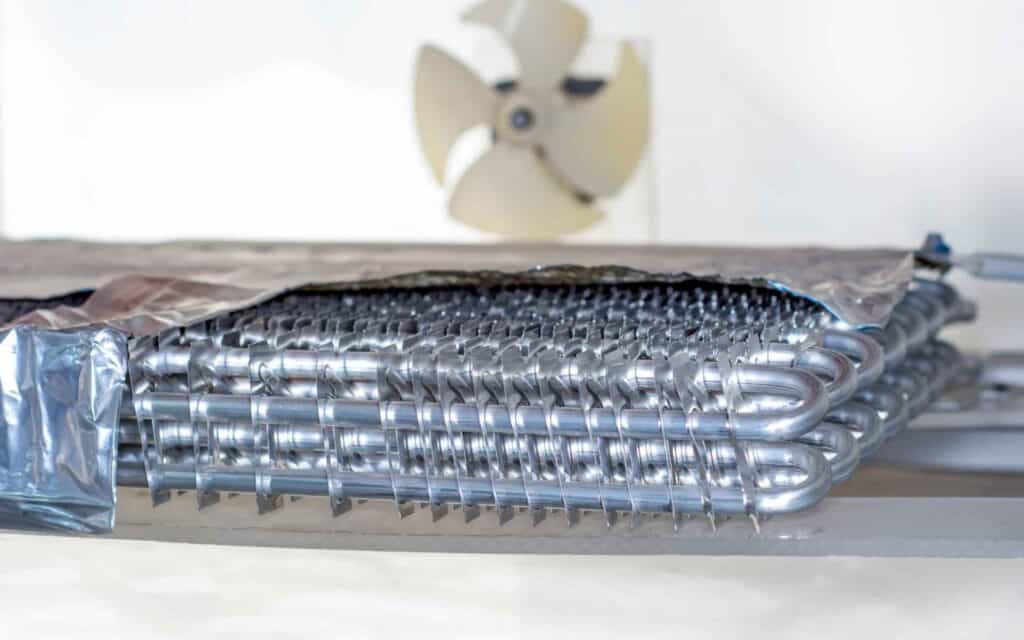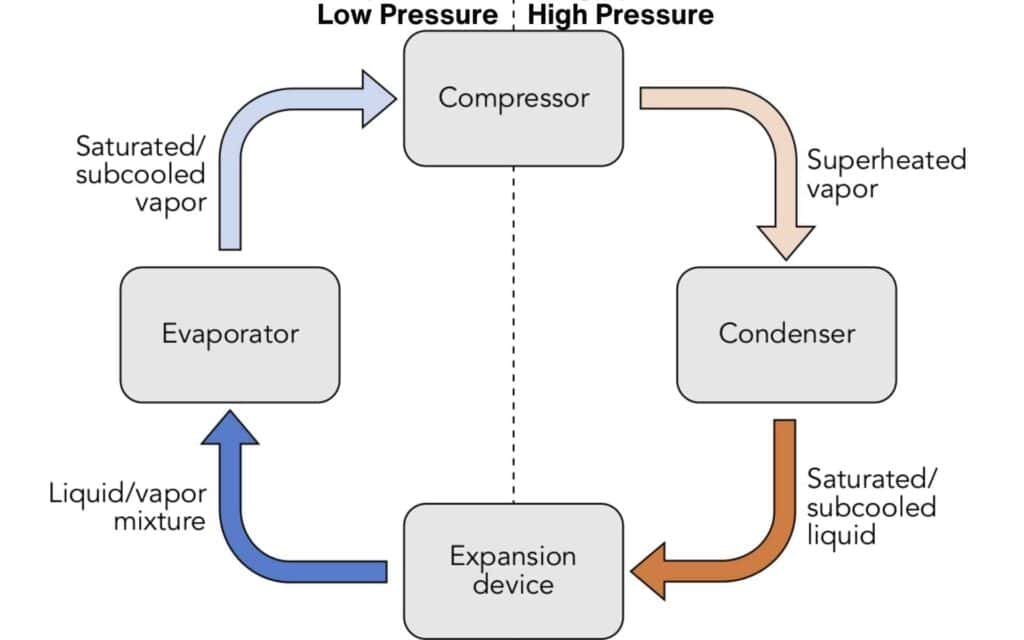Air conditioning systems have become an integral part of modern living, significantly enhancing indoor comfort by controlling temperature and humidity levels.
At its core, the primary purpose of an air conditioner is to remove heat and humidity from an indoor space, thereby creating a more comfortable environment for occupants.
This process is essential not only for residential settings but also for commercial and industrial applications where temperature control is crucial.
Let’s check, how does an air conditioner work?
There are various types of air conditioning systems to suit different needs and preferences. Central air conditioners are commonly used in larger homes and buildings, distributing cooled air through a network of ducts.
Ductless mini-splits, on the other hand, offer a versatile solution for homes without ductwork, consisting of an outdoor compressor and one or more indoor air-handling units.
Window units are a popular choice for cooling individual rooms, as they are relatively easy to install and cost-effective.
Portable air conditioners provide flexibility, allowing users to move the unit from room to room as needed.
How Does An Air Conditioner Work?
Understanding how an air conditioner works requires a basic knowledge of the principle of heat transfer.
Air conditioners operate on the concept of transferring heat from the indoor air to the outside environment.
This process involves the use of refrigerants, which absorb heat from the indoor air and release it outdoors through a cycle of compression and expansion.
The efficiency and effectiveness of this heat transfer process are critical to the performance of any air conditioning system.
The Key Components of an Air Conditioner
An air conditioning system comprises several critical components, each playing a pivotal role in maintaining a comfortable indoor environment.
Understanding these components and their functions can provide insights into how an air conditioner works effectively.
1. Compressor
The compressor is often referred to as the heart of the air conditioning system. Its primary function is to circulate the refrigerant through the system and maintain the necessary pressure for the refrigeration cycle.
By compressing the refrigerant, the compressor increases its pressure and temperature, transforming it into a high-pressure, high-temperature gas. This step is crucial for the subsequent heat exchange processes.
2. Condenser Coil
Once the refrigerant exits the compressor, it flows into the condenser coil. The condenser coil’s primary function is to release the absorbed heat from the refrigerant into the outdoor air.

As the high-pressure gas passes through the condenser coils, it dissipates heat to the surroundings, causing the refrigerant to condense into a high-pressure liquid.
This heat-release process is essential for cooling the refrigerant before it moves to the next stage.
3. Expansion Valve
After the refrigerant is condensed into a liquid, it flows through the expansion valve. The expansion valve’s role is to reduce the pressure and temperature of the refrigerant before it enters the evaporator coil.
By allowing the refrigerant to expand, the valve transforms it into a low-pressure, low-temperature liquid, preparing it for the heat absorption process in the evaporator coil.
4. Evaporator Coil
The evaporator coil is responsible for absorbing heat from the indoor air, effectively cooling it. As the low-pressure, low-temperature refrigerant flows through the evaporator coils, it absorbs heat from the surrounding air.
This heat absorption causes the refrigerant to evaporate into a gas while the cooled air is circulated back into the indoor environment by the air handler.
The refrigerant then returns to the compressor to repeat the cycle. The seamless interaction between these components ensures that the air conditioning system operates efficiently, providing consistent cooling and maintaining desired indoor temperatures.
What is The Refrigeration Cycle?
The refrigeration cycle is the cornerstone of how air conditioners function to cool indoor spaces. This process involves a systematic journey of the refrigerant through various components of the air conditioning system, ensuring efficient heat exchange and temperature control.
The cycle begins with the refrigerant in a low-pressure, gaseous state within the evaporator coil.

Here, the refrigerant absorbs heat from the indoor air, causing it to evaporate. As it evaporates, the refrigerant transitions into a gaseous form, carrying the absorbed heat away from the indoor environment.
This low-pressure gas then travels to the compressor, a pivotal component located in the outdoor unit.
The compressor’s primary function is to compress the refrigerant, significantly increasing both its pressure and temperature.
This high-pressure, high-temperature gas is essential for the subsequent stages of the cycle. Following compression, the refrigerant moves to the condenser coil.
The condenser coil facilitates the release of the heat absorbed from the indoor air. As the high-pressure refrigerant passes through the coil, it dissipates heat to the outside environment and condenses into a high-pressure liquid.
Next, the high-pressure liquid refrigerant encounters the expansion valve. This valve plays a crucial role in the refrigeration cycle by reducing the refrigerant’s pressure and temperature dramatically.
As the refrigerant exits the expansion valve, it transforms into a low-pressure, low-temperature mixture of liquid and vapor.
The final stage of the cycle sees the refrigerant returning to the evaporator coil. In the evaporator coil, the refrigerant absorbs indoor heat once more, evaporating and restarting the cycle.
This continuous loop effectively removes heat from indoor spaces, ensuring a comfortable and cool environment.
To fully grasp the intricacies of the refrigeration cycle, visual aids or diagrams can be immensely helpful.
These tools can provide a clear representation of the refrigerant’s journey, enhancing the understanding of this complex yet essential process.
The Role of the Thermostat and Control System in Air Conditioner
The thermostat and control system are pivotal components in the operation of an air conditioner, serving as the brain that regulates its functionality.
The thermostat’s primary role is to monitor the indoor temperature and signal the air conditioning system to activate or deactivate to maintain the desired climate within a space.
This temperature regulation ensures comfort and energy efficiency by preventing the system from running unnecessarily.
Thermostats come in various forms, each offering distinct features and benefits. Manual thermostats require users to adjust settings manually, providing a straightforward but less convenient method of temperature control.
Programmable thermostats, on the other hand, allow users to set schedules for temperature adjustments throughout the day, enhancing energy efficiency by aligning air conditioning operations with occupancy patterns.
Smart thermostats represent the latest advancement, offering remote control via smartphone apps, learning user preferences over time, and integrating with home automation systems for seamless operation.
The control system works in tandem with the thermostat to manage the air conditioner’s key components, such as the compressor, fans, and blower motor.
When the thermostat detects a temperature discrepancy from the set point, it sends a signal to the control system, which then activates the compressor and fans to initiate the cooling process.
Once the desired temperature is achieved, the thermostat signals the system to shut down, conserving energy and reducing wear on the components.
Effective integration of the control system with the thermostat ensures the air conditioner operates at optimal performance levels.
This integration not only promotes energy efficiency but also enhances the longevity of the unit by preventing overuse and mitigating potential mechanical issues.
Advanced control systems can also provide diagnostic information, alerting users to maintenance needs and potential problems before they escalate.